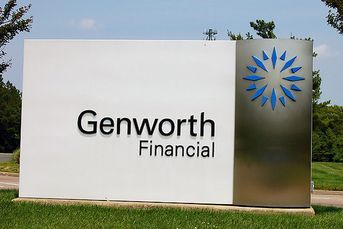Advisers: Preparing clients for the worst on taxes
Financial advisers are fairly clear about what is in store for their clients: taxes that are unlikely to go down and may rise.
Uncertainty shrouds the budget poker game that President Barack Obama and Congress are playing as the country approaches its statutory-debt limit later this summer.
But financial advisers are fairly clear about what is in store for their clients: taxes that are unlikely to go down and may rise.
With that in mind, many advisers are spending more time this summer making sure that their clients are investing and planning their finances in a tax-efficient way. After all, money saved through a mundane tax-saving strategy is just as tangible as money made through a clever investing program.
“Sometimes people forget — it’s the after-tax returns that matter most,” said Melissa Labant, a technical manager in the tax division of the American Institute of Certified Public Accountants and a former financial planner with PricewaterhouseCoopers LLC.
BOND BIND
On the fixed-income front, finding returns of any kind, let alone significant after-tax returns, isn’t easy, given the persistently low interest rates currently available.
“Getting a decent yield and also being tax-aware is getting more and more difficult,” said Jeff Farrar, a financial adviser with UBS Financial Services Inc.
One place where he continues to look for those yields is the municipal bond market.
The rout in muni bonds this year provided buying opportunities, Mr. Farrar said.
Like many advisers, he is staying away from U.S. Treasury bonds, given their low yields, but he remains interested in munis — in large part because of their tax efficiency.
Mr. Farrar now spends more time assessing the creditworthiness of the approximately 80,000 issuers in the United States and is generally staying away from smaller entities. But given that the interest on muni bonds is tax-free at the federal level — and at the state level if the investor resides in the state that issued the bond — he continues to look in the sector.
“The opportunities come when someone says Illinois is about to go broke,” Mr. Farrar said.
With interest rates so low, Murray Stoltz, president of family office Manchester (Vt.) Capital Management, is less interested in muni bonds’ tax efficiency. His main concern is keeping clients on the short end of the duration curve.
SHORT-TERM PORTFOLIOS
“In the short- and medium-term arena, the after-tax yield for taxable and municipal bonds tends to be pretty close,” Mr. Stoltz said.
A tax-efficient muni bond might fit the bill, but investors should look for the best available instrument overall, he said.
“For the first time in a very long time, investors really have to consider their short-term portfolios,” Mr. Stoltz said.
Money market funds are yielding virtually nothing after the fee is considered, so one simple recommendation he has for risk-averse investors is to comb the Internet for the best rates on federally insured certificates of deposit. CDs with a 12-month term won’t pay much over 1%, but they are insured up to $250,000 per person.
From a tax perspective, a question as important as what assets to buy is where those assets should be held — in taxable or non-taxable accounts. The rule of thumb still followed by most advisers is to put income-producing investments, such as taxable bonds, real estate investment trusts and high-dividend stocks, in tax-deferred accounts and tax-efficient investments, such as muni bonds, and those generating long-term capital gains, such as stocks, in taxable accounts.
The rationale is that taxes deferred are better than taxes that have to be paid by April 15.
A strategy that many advisers continue to suggest is the conversion of traditional individual retirement accounts — in which contributions are tax-deductible — to Roth IRAs, where they aren’t. Conversions make sense for people who expect to be in the same or a higher tax bracket later in life or when they retire.
For those who are eligible, advisers have been recommending IRA conversions for several years.
Advisers have been particularly enthusiastic about converting since Congress made it available to all taxpayers in 2009. The extension of the Bush tax cuts late last year gave those sitting on the conversion fence another two years to take advantage of lower rates.
David Marotta, a financial adviser in Charlottesville, Va., suggests that advisers should do more than just make their clients aware of the option. For his clients with large traditional IRAs, he suggests setting up multiple Roth accounts holding different asset classes and then waiting to determine which to keep and which to re-characterize back to traditional IRAs.
The idea is to cherry-pick the winners and to pay tax only on the original converted amount. The accounts then appreciate tax-free.
The losers can be re-characterized as a traditional IRA so that no taxes have to be paid until retirement. The strategy can dramatically improve overall returns, Mr. Marotta said.
“It’s like betting on a horse race after the winner has already been determined,” he said.
The big downside of a Roth conversion is that taxes must be paid upfront. Converting a $1 million traditional IRA, for example, would cost $350,000 in taxes for someone in the 35% tax bracket.
If an individual can’t pay the tab with funds outside the IRA, the conversion probably won’t make sense, tax experts say. But if rates rise, converting will cost even more.
HARVEST TIME
A simple tax-lowering solution — particularly for high-net-worth investors with other assets — is to harvest capital losses, which can be used to offset up to $3,000 of ordinary income and capital gains dollar-for-dollar.
Donald Mulvihill, who manages the Goldman Sachs Structured Tax-Managed Equity Fund and provides input on tax efficiency and planning to Goldman’s wealth management group, suggests that wealthy clients sitting on a lot of capital gains consider taking advantage of the currently low tax rate on those gains.
“It might make sense for some individuals to pay the 15% rate on gains now rather than a potentially higher rate later and get themselves into a lower-risk position,” he said.
Still, advisers caution that tax saving shouldn’t be an end in itself. Good research and sound investing strategies are the best ways to ensure that investors’ wealth will grow, they say. In an environment where returns are hard to find, however, keeping as much as possible out of the hands of the tax collector makes a lot of sense.
E-mail Andrew Osterland at [email protected].
Learn more about reprints and licensing for this article.




